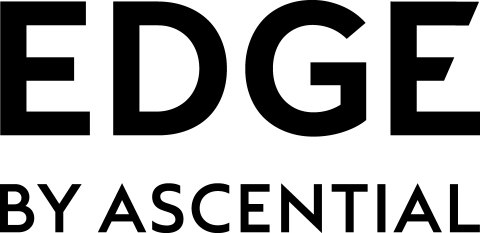Edge by Ascential Future Retail Disruption 2021-2022 Report: Online Sales Will Account for 40% of All Chain Retail Sales By 2026
Edge by Ascential Future Retail Disruption 2021-2022 Report: Online Sales Will Account for 40% of All Chain Retail Sales By 2026
- Almost 60% of retailers now offer two-hour delivery (or faster) as their fastest speed, making same-day fulfilment table stakes.
- Retailers in the US and China are leading the way in using micro-fulfilment centers and “dark stores,” to improve online economics. The UK is rapidly following suit.
BOSTON--(BUSINESS WIRE)--Edge by Ascential, whose technology-driven products power brands to win in digital commerce, today released its annual Future Retail Disruption Report for 2021-2022. The data shows that shoppers will continue to buy online post-pandemic, and to a greater extent than pre-COVID -- predicting that online sales will account for almost 40% of all chain retail sales by 2026.
The latest report shows the lasting impact of the COVID-19 crisis on retail, as well as the biggest drivers of consumer behavior going into the new year, and how retailers and brands can plan and innovate for this new operational paradigm shift.
“Retailers rushed to invest in at-home delivery capability, in-store pickup and store curbside pick-up back in March 2020 and as the crisis progressed and became a long-term situation, the last mile became a key battleground offering opportunities for differentiation and to lock in shopper loyalty,” said Deren Baker, CEO of Edge by Ascential.
“Eighteen months later, two-thirds of retailers (60%) offer two-hour delivery (or faster) and almost 30% of the retailers we cover at Edge Retail Insight commit to deliver in 30 minutes. These developments, along with online subscriptions, discounting measures and curated assortments, are helping to keep ecommerce penetration above pre-pandemic levels,” Baker added.
In the US, e-commerce is anticipated to grow by 24% this year, 32% in the UK, 26% in Germany and 28% in Brazil.
The latest report highlights some of the new and updated drivers of change:
-
Purpose-driven shopping
- With consumer confidence and household budgets tight after the pandemic, price and availability remain at the forefront of purchase decisions, but shoppers are increasingly looking for product qualities that align with values.
-
Omnichannel fulfilment diversity
- The past year has rapidly increased table stakes for last-mile fulfilment through both owned and partnered pickup and delivery. Same-day options are now the norm across advanced e-commerce markets, with rapid delivery players offering delivery in 30 minutes or less in many cities.
-
The rise of retailer media platforms
- As traditional retailers look to offset the cost of last-mile fulfilment, many of the bigger names are morphing into sophisticated advertising players through ad-tech partnerships or developing their own capabilities. Edge by Ascential’s sister brand, WARC, forecasts that retailer media will grow three times faster than the all-media rate in 2021.
-
Declining store real estate
- The dramatic shift online will accelerate physical store closures. Across channels, compound annual growth rate (CAGR) will either remain static or shrink over the next five years.
“Every year, our Retail Insight analysts review what we see as the biggest drivers of change that could disrupt business in the retail industry,” said Xian Wang, VP, Edge Retail Insight. “In 2022, those who can master platforms and the new environment will put themselves in the best situation and will be ahead of the game.”
About the report
Data and insight comes from Edge by Ascential’s Future Retail Disruption Midyear Update, September 2021-2022, available on subscription to the Edge by Ascential Retail Insight platform. The report was created with data from Edge by Ascential’s proprietary analytics tool, Retail Market Monitor, which can analyze the entire retail ecosystem by sector, geography and channel, and identifies growth opportunities for retailers and brands.
Retail sales referenced are calculated using Gross Merchandise Value (GMV), a standard used to measure the size of a third-party (3P) marketplace. It is calculated by multiplying the number of products sold by the price at which each product was sold over a given time period. Retail sales data includes online and offline operations, and only includes chain retailers, of which Edge Retail Insight covers almost 2,500 worldwide.
Our forecasts change week-by-week because of the fast-changing developments in the market; today as a result of the pandemic and evolving government messaging around lockdowns, but also because of the fast-paced changes and developments in digital innovation and e-commerce.
About Edge by Ascential:
Edge by Ascential powers the digital commerce segment for brands. The world's leading brands focus their local and global go-to-market strategy by using Edge’s predictive retail intelligence technology, advisory services, digital shelf monitoring insights and market share performance analytics. We're giving global brands the strategy, execution and performance edge they need to win in digital commerce.
About Ascential
Ascential delivers specialist information, analytics and eCommerce optimisation platforms to the world's leading consumer brands and their ecosystems. Our world-class businesses improve performance and solve problems for our customers by delivering immediately actionable information combined with visionary longer-term thinking across Digital Commerce, Product Design and Marketing. We also serve customers across Retail & Financial Services.
With more than 2,000 employees across five continents, we combine local expertise with a global footprint for clients in over 120 countries. Ascential is listed on the London Stock Exchange.
For more information, visit www.ascentialedge.com.
Contacts
PR for Edge by Ascential
Brent Bucci
707-685-1981

